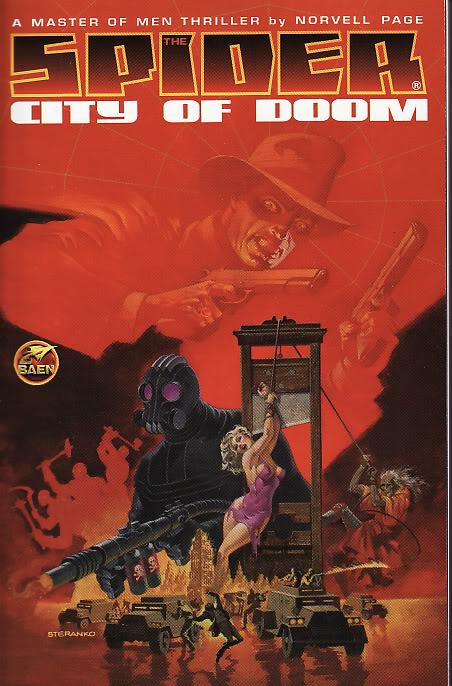Caspak Victorious: The Land That Time Forgot
 “You have read the opening paragraph, and if you are an imaginative idiot like myself, you will want to read the rest of it; so I shall give it to you here…”
“You have read the opening paragraph, and if you are an imaginative idiot like myself, you will want to read the rest of it; so I shall give it to you here…”
I often refer to Edgar Rice Burroughs as an “excuse” author. It seems readers or critics can’t discuss him without qualifiers to excuse reading him. A typical statement: “Edgar Rice Burroughs wasn’t a good writer but he had a vast imagination.”
I not-so-respectfully object to the assessment of Burroughs as a poor writer. In his best works, he pulls me along and engrosses me far more than most bestselling “thriller” authors published today. I can pick apart objective deficiencies in his style, criticize his dips into awkward phrasing, but this ultimately doesn’t matter in his overall style, which reads fast, involving, and exciting. His prose style matches the types and tones of the stories he wants to tell, fits them so well that I can’t imagine another style that would work with them. That, in my reader’s eyes, makes Edgar Rice Burroughs a great writer.
 Bill Ward recently posted two articles on “hyperspeed reading,”
Bill Ward recently posted two articles on “hyperspeed reading,” 
 The Return of the King (ABC TV, 1980)
The Return of the King (ABC TV, 1980)
 Clint Eastwood never starred in or directed a sword-and-sorcery or heroic fantasy movie, and since he’s declared his retirement from acting with 2008’s Gran Torino, chances are he never will. That’s too bad, since the leathery, iconic actor might have made a nice fit into certain dark fantasy worlds. Michael Moorcock thought he would have made an excellent Eric John Stark; I agree. But Eastwood as a performer and director was more interested the realistic American landscape, and he never got near the world of the overtly fantastic.
Clint Eastwood never starred in or directed a sword-and-sorcery or heroic fantasy movie, and since he’s declared his retirement from acting with 2008’s Gran Torino, chances are he never will. That’s too bad, since the leathery, iconic actor might have made a nice fit into certain dark fantasy worlds. Michael Moorcock thought he would have made an excellent Eric John Stark; I agree. But Eastwood as a performer and director was more interested the realistic American landscape, and he never got near the world of the overtly fantastic.



